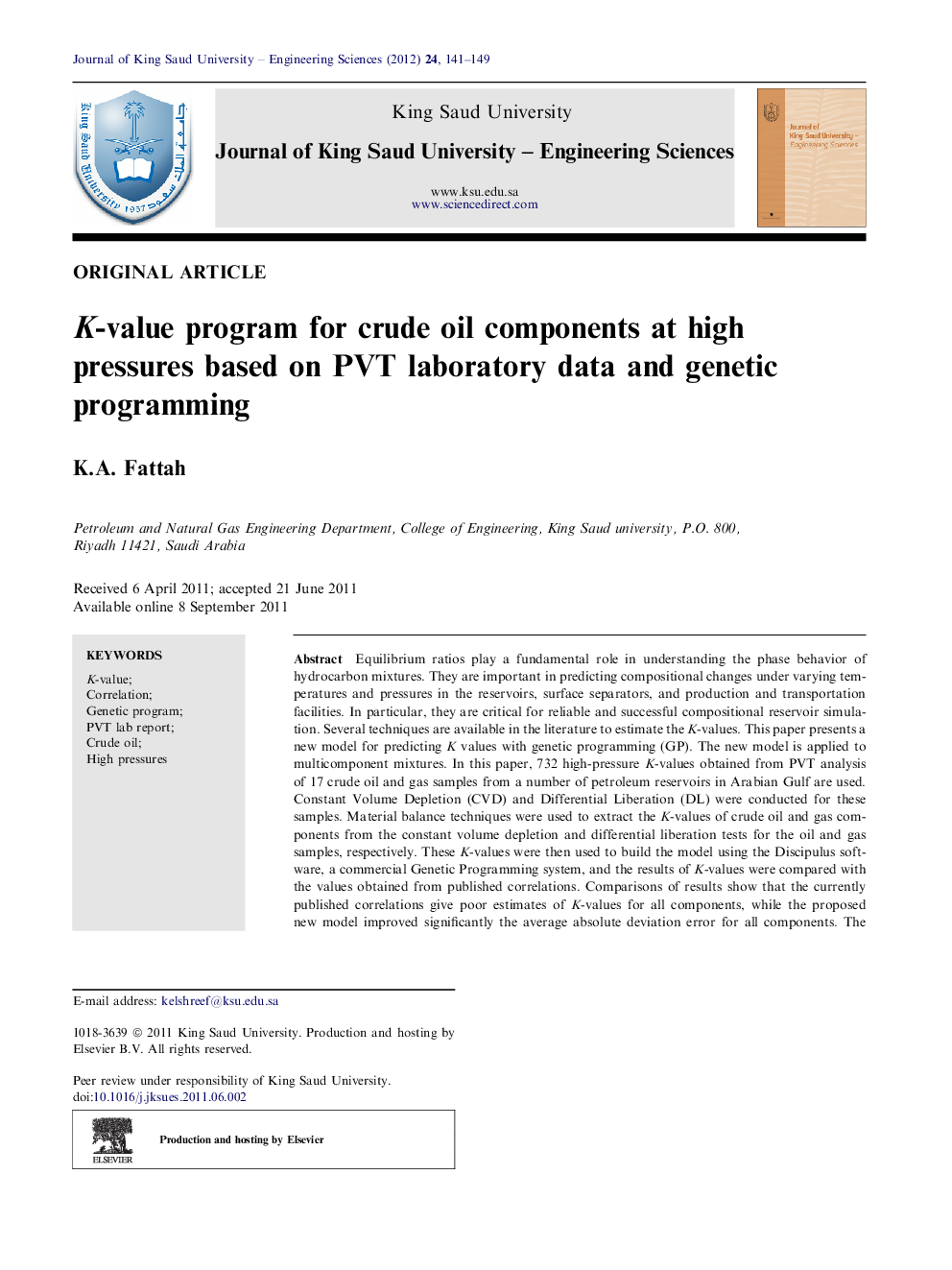| کد مقاله | کد نشریه | سال انتشار | مقاله انگلیسی | نسخه تمام متن |
|---|---|---|---|---|
| 827274 | 907990 | 2012 | 9 صفحه PDF | دانلود رایگان |

Equilibrium ratios play a fundamental role in understanding the phase behavior of hydrocarbon mixtures. They are important in predicting compositional changes under varying temperatures and pressures in the reservoirs, surface separators, and production and transportation facilities. In particular, they are critical for reliable and successful compositional reservoir simulation. Several techniques are available in the literature to estimate the K-values. This paper presents a new model for predicting K values with genetic programming (GP). The new model is applied to multicomponent mixtures. In this paper, 732 high-pressure K-values obtained from PVT analysis of 17 crude oil and gas samples from a number of petroleum reservoirs in Arabian Gulf are used. Constant Volume Depletion (CVD) and Differential Liberation (DL) were conducted for these samples. Material balance techniques were used to extract the K-values of crude oil and gas components from the constant volume depletion and differential liberation tests for the oil and gas samples, respectively. These K-values were then used to build the model using the Discipulus software, a commercial Genetic Programming system, and the results of K-values were compared with the values obtained from published correlations. Comparisons of results show that the currently published correlations give poor estimates of K-values for all components, while the proposed new model improved significantly the average absolute deviation error for all components. The average absolute error between experimental and predicted K-values for the new model was 4.355% compared to 20.5% for the Almehaideb correlation, 76.1% for the Whitson and Torp correlation, 84.27% for the Wilson correlation, and 105.8 for the McWilliams correlation.
Journal: Journal of King Saud University - Engineering Sciences - Volume 24, Issue 2, July 2012, Pages 141–149